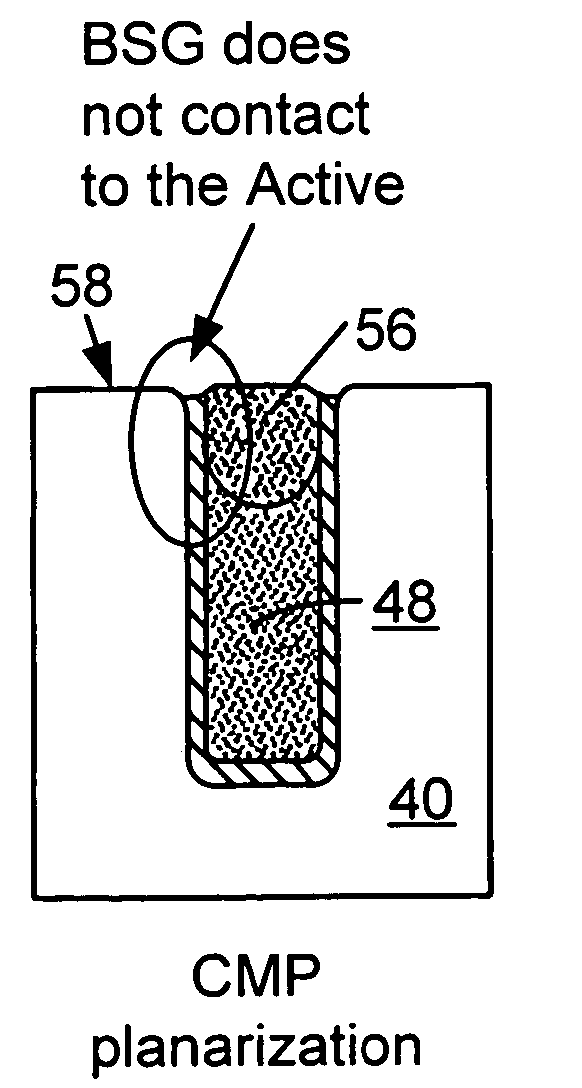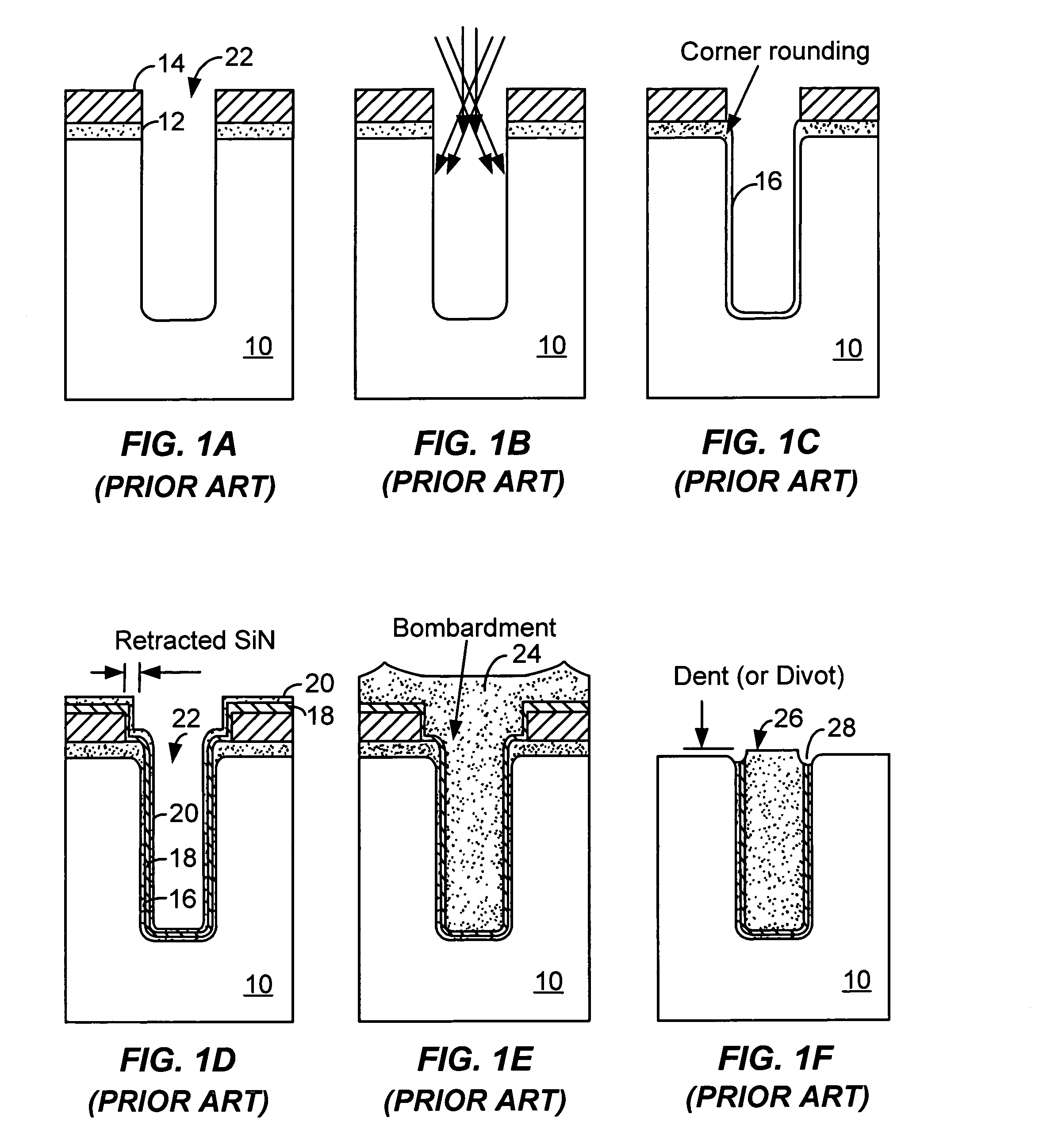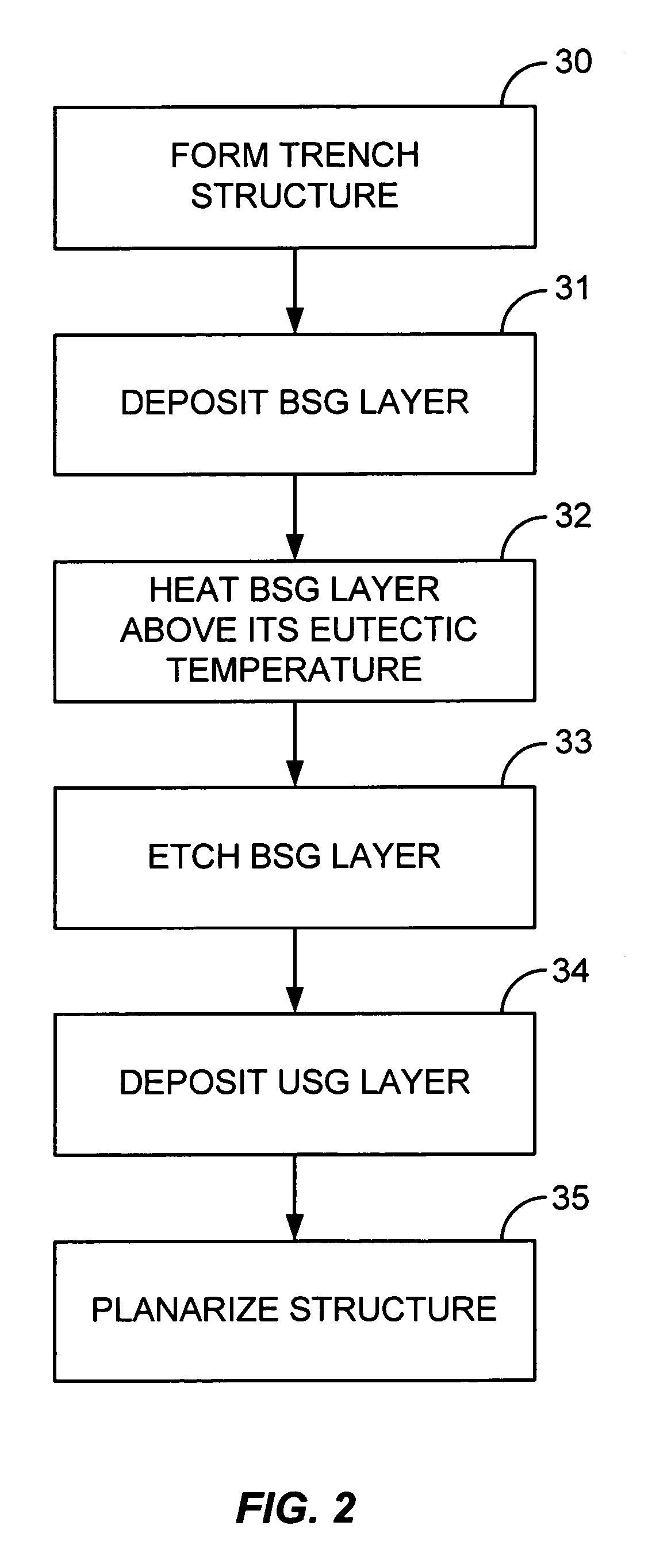Gap filling with a composite layer
a composite layer and gap filling technology, applied in the direction of basic electric elements, semiconductor/solid-state device manufacturing, electric apparatus, etc., can solve the problems of affecting device operation and requiring semiconductor manufacturers to fill completely
- Summary
- Abstract
- Description
- Claims
- Application Information
AI Technical Summary
Benefits of technology
Problems solved by technology
Method used
Image
Examples
Embodiment Construction
[0019]Embodiments of the invention fill trenches and / or gaps between adjacent raised features of integrated circuits by depositing a composite insulating material, such as silicon oxide material, into the trenches and / or gaps. The inventors have developed a method of depositing the composite material using a multistep process. In one embodiment the multistep process includes a depositing a first boron-doped silicon oxide layer (also referred to as borosilcate glass or BSG layer) using a thermal CVD technique, heating the deposited BSG layer above its Eutectic temperature and then depositing a second undoped silicon oxide layer (or USG layer) over the BSG layer using a plasma CVD technique. The multistep process can be used to fill the STI trenches in a manner that is superior to using a single layer alone. Embodiments of the invention permit the dielectric material to be deposited with substantially 100% gapfill for integrated circuits having minimum feature sizes of 0.10 μm or less...
PUM
| Property | Measurement | Unit |
|---|---|---|
| temperature | aaaaa | aaaaa |
| pressure | aaaaa | aaaaa |
| pressure | aaaaa | aaaaa |
Abstract
Description
Claims
Application Information
 Login to View More
Login to View More - R&D
- Intellectual Property
- Life Sciences
- Materials
- Tech Scout
- Unparalleled Data Quality
- Higher Quality Content
- 60% Fewer Hallucinations
Browse by: Latest US Patents, China's latest patents, Technical Efficacy Thesaurus, Application Domain, Technology Topic, Popular Technical Reports.
© 2025 PatSnap. All rights reserved.Legal|Privacy policy|Modern Slavery Act Transparency Statement|Sitemap|About US| Contact US: help@patsnap.com



